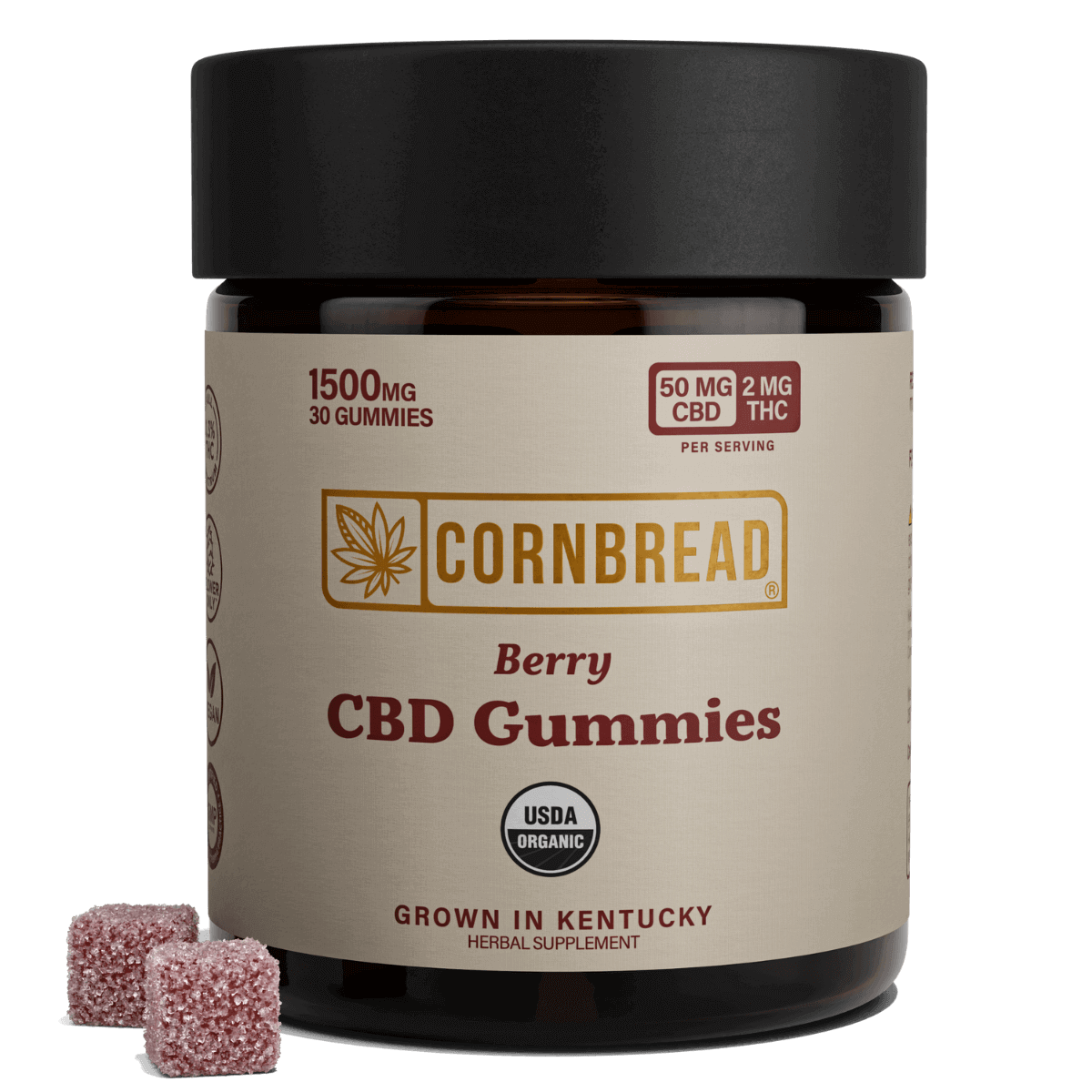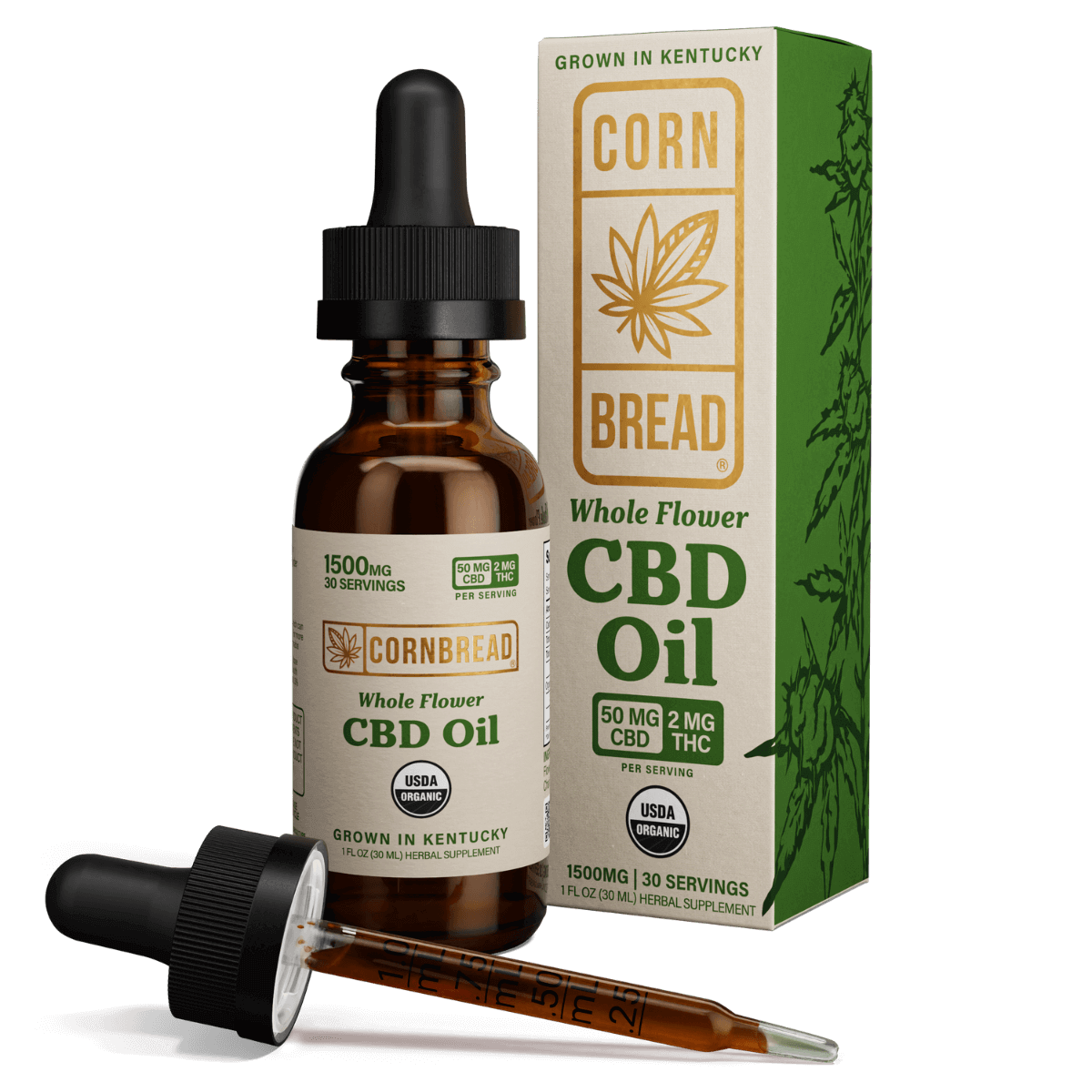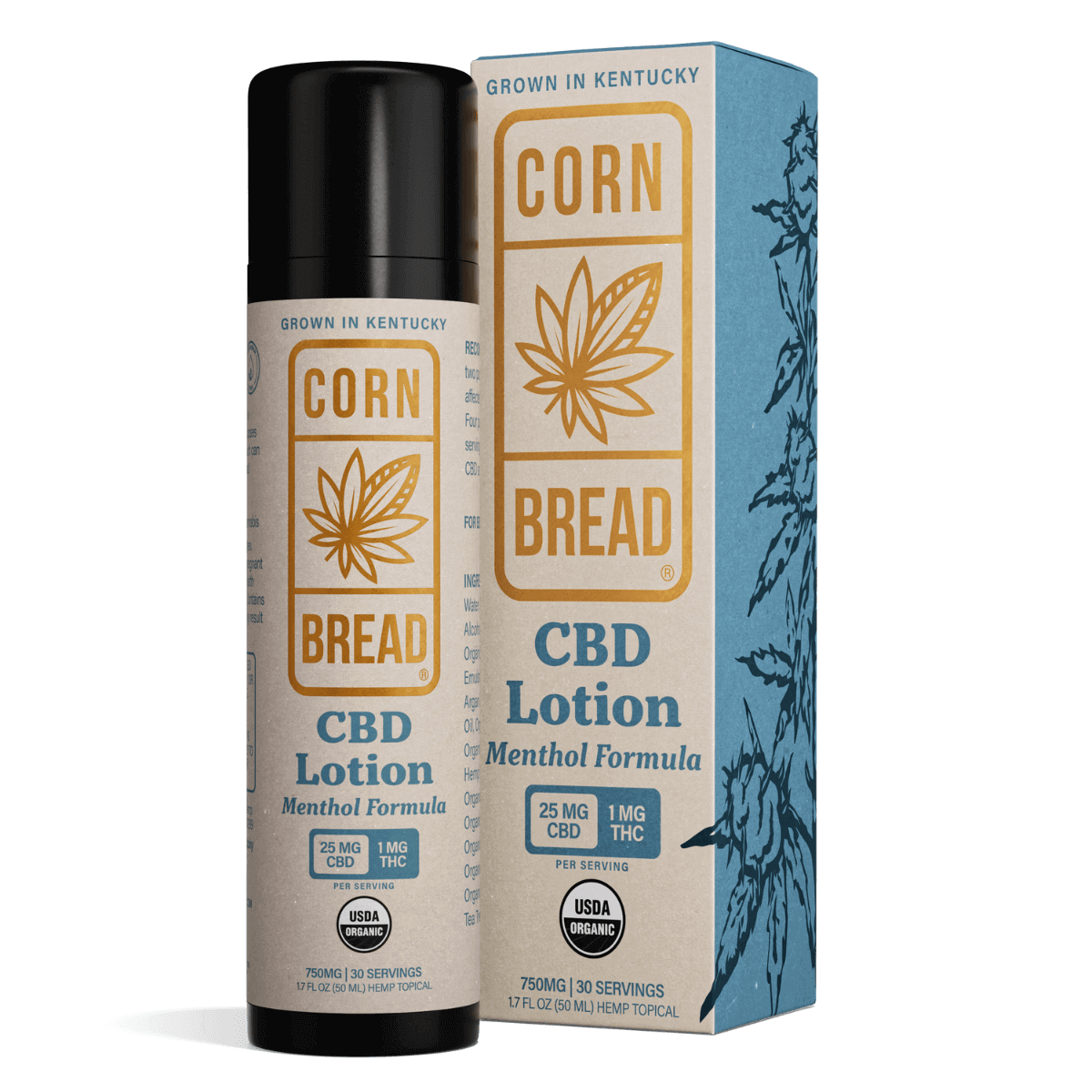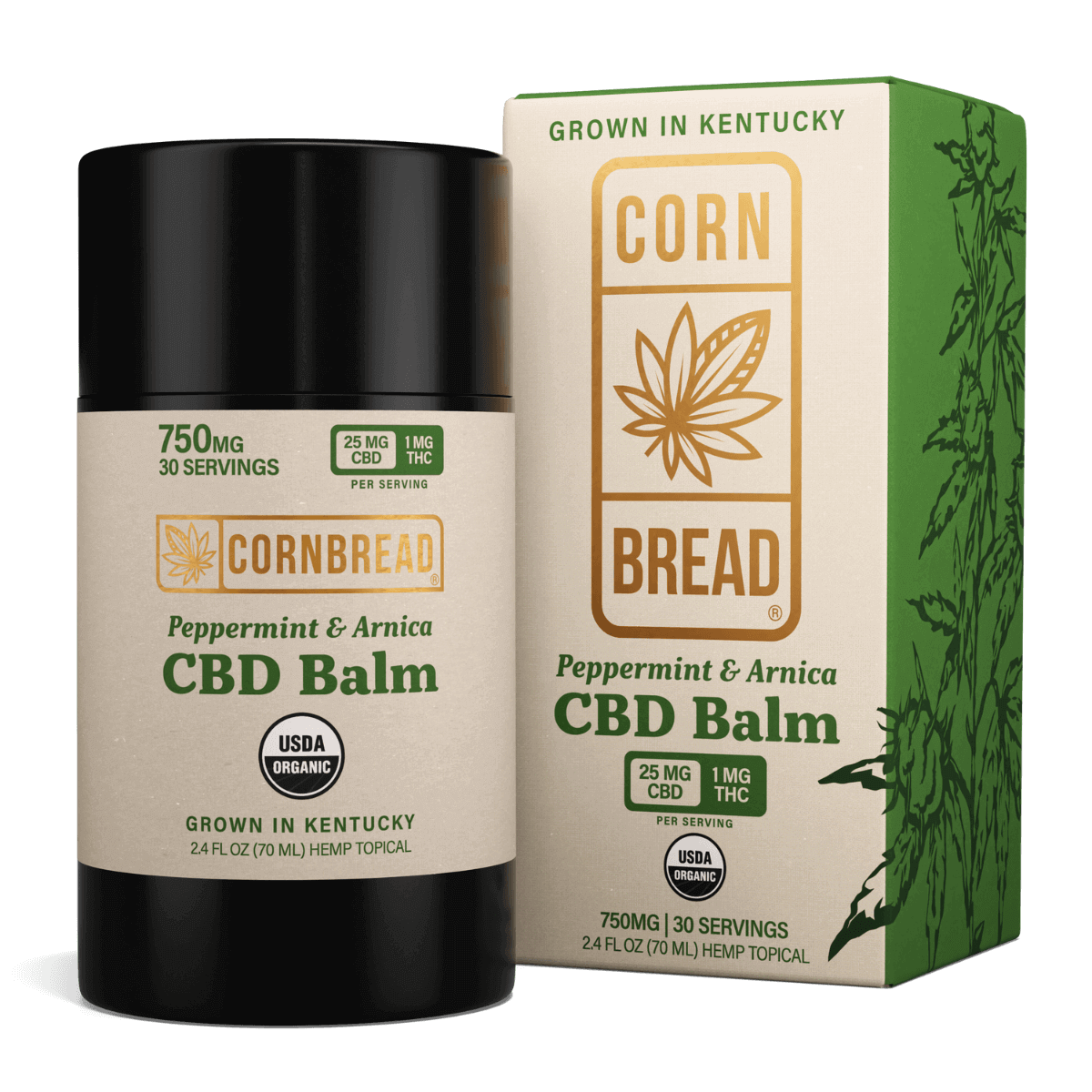Table of Contents
- WHAT IS THE BEST CBD EXTRACTION METHOD?
- WHY DOES CBD NEED TO BE EXTRACTED?
- HEMP BIOMASS
- WHOLE PLANT
- FLOWERS AND LEAVES
- FLOWER ONLY
- WHAT IS THE BEST EXTRACTION METHOD FOR CBD OIL?
- CO2 CBD EXTRACTION
- BUTANE CBD EXTRACTION
- ETHANOL CBD EXTRACTION
- ORGANIC SUGARCANE ETHANOL CBD EXTRACTION
- THIRD PARTY LAB REPORTS
- CORNBREAD HEMP
What is the best CBD Extraction Method?
Cornbread Hemp’s CBD products are the most trustworthy CBD oil products available in America, and that all starts with our CBD extraction process. Each decision at every step of this process affects the end product that we put into every bottle of Cornbread Hemp. That’s why we conduct a hemp Flower-Only™ CBD extraction process that is unique in the CBD oil industry. It’s not that no other company could replicate our process, it’s just they choose not to.
Our products are derived from organic Kentucky-grown hemp, which meets the legal requirements of having not more than 0.3 percent THC. The CBD and other cannabinoids, terpenes, and other desirable compounds in hemp are extracted in the safest, most complete method possible using organic sugarcane ethanol.
WHY DOES CBD NEED TO BE EXTRACTED?
Raw hemp greens can be very bitter, like dandelion, arugula, and endive greens (they are also equally nutritious)1 and will not have the expected effect. In order for the cannabinoids to be effective, they first must be decarboxylated, or heated up. This is why all CBD products must undergo some form of extraction, and there are many different extraction methods that are commonly used.
So what factors go into the different CBD extraction methods? Here’s a quick breakdown of the different extraction methods in the CBD industry to make CBD extract, which they then use to make their CBD oils and CBD tinctures. You'll see why Cornbread Hemp makes the choices we make when it comes to CBD extraction methods.
HEMP BIOMASS
The best CBD products depend on the quality of the biomass that you extract CBD from. "Biomass" is just a fancy way of saying the plant material from which something is produced. In this case, it means hemp. And in Cornbread Hemp’s case, it means sun-grown, organic, herbicide- and pesticide-free, good ole Kentucky hemp flowers.
WHOLE PLANT
Most CBD oil brands extract cannabinoids from the whole hemp plant. Some major brands identify this on their ingredients label as “aerial parts,” which means every part of the plant that touches the air — so everything but the roots. The whole plant is ground up in a machine that resembles a wood chipper and then pelletized. Then the machine will extract CBD from the pellets.
FLOWERS AND LEAVES
Some higher quality brands remove the stalk and only use the flowers and leaves for extracting CBD. This is a step better than “whole plant,” but it’s not good enough for Cornbread Hemp. Hemp leaves have terpenes, which give them their zesty flavor when consumed raw but they have negligible amounts of cannabinoids in them.
FLOWER ONLY
Cornbread Hemp may be unique in the CBD industry for only using hemp flowers in our extraction process. This Flower-Only™ process produces a richer full spectrum of cannabinoids and terpenes for the best entourage effect, and it maintains the flavor of cannabis flowers. The THC in hemp plants is also mostly concentrated in the flower, which gives Cornbread Hemp oil as high a level of THC allowed by federal law.
WHAT IS THE BEST EXTRACTION METHOD FOR CBD OIL?
There are many different commonly used ways to extract CBD from hemp, and each have their own set of pros and cons.
CO2 CBD EXTRACTION
This commonly used full spectrum CBD extraction method uses carbon dioxide (CO2) in a supercritical form. This means that the chemical compound CO2 is pressurized into an especially dense state, making it somewhat like a liquid and a gas at the same time.2 This is good for industrial CBD extraction because you can process a lot of hemp plant trimmings in a little time, and the final product is still safe for human consumption. However, the CO2 extraction process is less gentle because of the extremes in temperature and pressure involved, often leaving the final product with a harsh taste.
Extracting CBD using the CO2 method normally requires three different chambers. In the first chamber, there’s liquid CO2 that’s pressurized. The second chamber is full of the biomass, which is legal hemp plant matter. The extraction machine pumps the liquid CO2 into the second chamber, where the temperature is slightly higher.
Since the temperature is higher, the carbon dioxide becomes a supercritical gas, which quickly removes cannabinoids and other desirable compounds from the hemp. Once the cannabinoids are out of the hemp, the solution moves into the extraction system’s third chamber, where the pressure is reduced until the CO2 turns back into a gas. The gas releases the cannabinoids and dissipates, so the extracted crude oil collects at the bottom of the chamber.3
Facilitating CO2 extraction can be a cost effective method for brands because automated machines do most of the work, requiring minimal facility safety requirements. However, CO2 extractions cannot be certified organic.
BUTANE CBD EXTRACTION
Butane is a dangerous chemical compound and has long been used as a solvent in cannabis extraction. Butane is a gas at room temperature and atmospheric pressure. It is also highly flammable and quickly vaporizes at room temperature. That’s why butane is dangerous to work with.
The safest butane extraction systems use a closed loop where the liquid butane washes over the cannabis, releasing the CBD, and the other chemical compounds. The mixture then has to be carefully heated to separate the butane from the extracted compounds without damaging them. According to WeedMaps, “The main drawback of solvent extraction is that some solvents [like butane] may extract impurities from the cannabis plant material, which could give the final product an unpleasant taste.”4 Butane is also highly toxic and if it is not extracted correctly and fully it can cause adverse health effects and even death.
ETHANOL CBD EXTRACTION
The ethanol extraction method is almost exactly the same as the butane CBD extraction method, however it uses ethanol as the solvent. In most cases, ethanol must be sold as denatured alcohol in order for it to be legal. Denatured alcohol is ethanol that has additives to make it poisonous, bad-tasting, foul-smelling, or nauseating to discourage people for using it like booze, as it is highly poisonous and can result in blindness. It is sometimes dyed so that it can be identified visually. In the United States, mixtures sold as denatured alcohol often have less than 50% ethanol because of all of the additives.5
ORGANIC SUGARCANE ETHANOL CBD EXTRACTION
If we do say so ourselves, the organic sugarcane ethanol extraction process is the best method of full spectrum CBD extraction and it’s the only one we use at Cornbread Hemp. The process is the same as other solvent extraction methods, but in this case our ethanol is made from organic sugarcane. This allows our extraction process to be considered organic by the USDA. Essentially, organic sugarcane ethanol is super-duper high proof rum that is not denatured (but, no, you shouldn’t drink it!). This solvent compliments the flavor of the hemp flowers and adds a bit of sweetness. It is a very gentle process that maintains the the purity of the CBD and displays the full potential of hemp.
THIRD PARTY LAB REPORTS
Because any solvent may leave dangerous residues behind, this is one of the many reasons why we rely on third-party lab tests. Not only do they verify a full spectrum of cannabinoids, but they also prove that there are no residual solvents or other contaminants in the final product.
Many brands do not conduct a full panel of tests on their lab reports. That’s why consumers should only trust a CBD oil brand that tests for the presence of any residual solvent, pesticides, heavy metals, bacteria, molds, and fungus.
We test every batch. All lab results are available on our website and on every single CBD product label we print a QR that leads you directly to the specific lab report for your batch. This way, you always know every single ingredient that is going into your CBD oil.
CORNBREAD HEMP
Cornbread Hemp is unique in the market because we are the only CBD oil brand to conduct Flower-Only™ CBD extraction using organic hemp flowers with organic sugarcane ethanol. That's why we call our flagship product "Whole Flower" CBD oil instead of "whole plant" -- because we only use the flowers, and that makes all the difference. We use organic MCT coconut oil as a carrier oil for the quickest absorption and bioavailability, and that's it! No additional flavors, sweeteners, or essential oils are necessary.
Cornbread Hemp’s organic Kentucky hemp is sun-grown with crop rotation and beneficial insects, rather than with pesticides and herbicides. Kentucky sits on a massive limestone rock bed that provides some of the most nutritious soil and water on earth. This is why Kentucky produces the best bourbon, and now the best CBD oil products.
We have some of the best-reviewed CBD oil products in the marketplace. With Cornbread Hemp you can count on fast shipping directly to your doorstep, reliable customer service, and above all you can count on receiving the highest quality CBD products available in America today.












 Log in
Log in



















